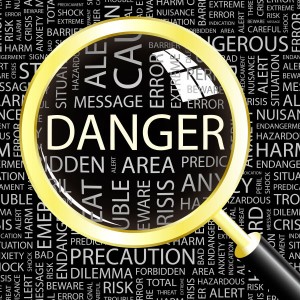Anyone who has ever purchased a home knows that it is mandatory to have a carbon monoxide detector in the home in order for it to be considered safe. However, many people do not understand exactly what carbon monoxide poisoning is or how their chimney can contribute to it. It is important to understand how these two things go together in order to keep the entire family safe and healthy.
When coal and fire burn in a fireplace, carbon monoxide is one of the byproducts. This is not a problem, as long as there is nothing blocking the chimney. If the chimney is blocked, combustion gasses accumulate inside of it with nowhere to go. If the gasses are not allowed to leave the chimney, they have nowhere to go but into home. This is especially dangerous because the poisonous gas is colorless, odorless and tasteless, so it may go unnoticed for quite some time.
Another common mistake that many people make is running an exhaust fan while they have their fireplace going. This not only removes healthy air from the home but it spreads the deadly air throughout the space. If it is necessary, for some reason, to run the fan while the fireplace is working, it is important to only leave it running for a few minutes at a time. Any longer may put the entire household in danger.
Although it is impossible to see, smell or taste carbon monoxide, the chimney itself might provide a few indicators that it is in the air. For example, when there is a fire, the chimney may put stuffy, heavy air back into the environment of the home. Homeowners also notice a back draft with soot coming out of the chimney. If any of these signs appear, it is a good idea to make sure that the carbon monoxide detector in the home is working properly.
There are also some physical symptoms that people in the house might notice if they are affected by carbon monoxide poisoning. The problem is that many of the early symptoms appear to be something like the flu, which leads many people to misdiagnose it. For example, they may have a headache, nausea and vomiting. When the situation becomes more advanced, they may notice that they experience a loss of muscle control. If the illness progresses to this point, it is necessary to see a doctor as quickly as possible. If left untreated, carbon monoxide poisoning is fatal.
The best way to avoid carbon monoxide entering the home through the chimney is to have it inspected annually. A chimney sweep will be able to tell whether there are any clear risk factors for carbon monoxide. It is also very important to make sure that there are working carbon monoxide detectors in the home. Check the batteries every month along with checking the smoke detectors.
Carbon monoxide is an extremely dangerous gas and it is important to realize that it can enter the home because of the chimney. To make sure that all dangerous gasses leave the home instead of entering it, always keep the chimney clear of any obstructions. If soot comes down from the chimney or the air becomes stuffy, make sure that there are proper detectors in place to alert the family of carbon monoxide in the air. Failure to take these important precautions could be life threatening.

